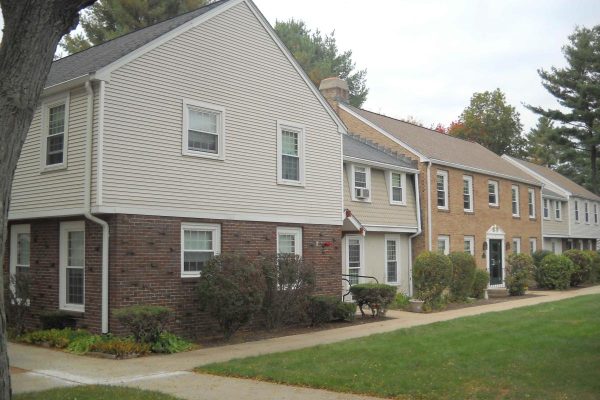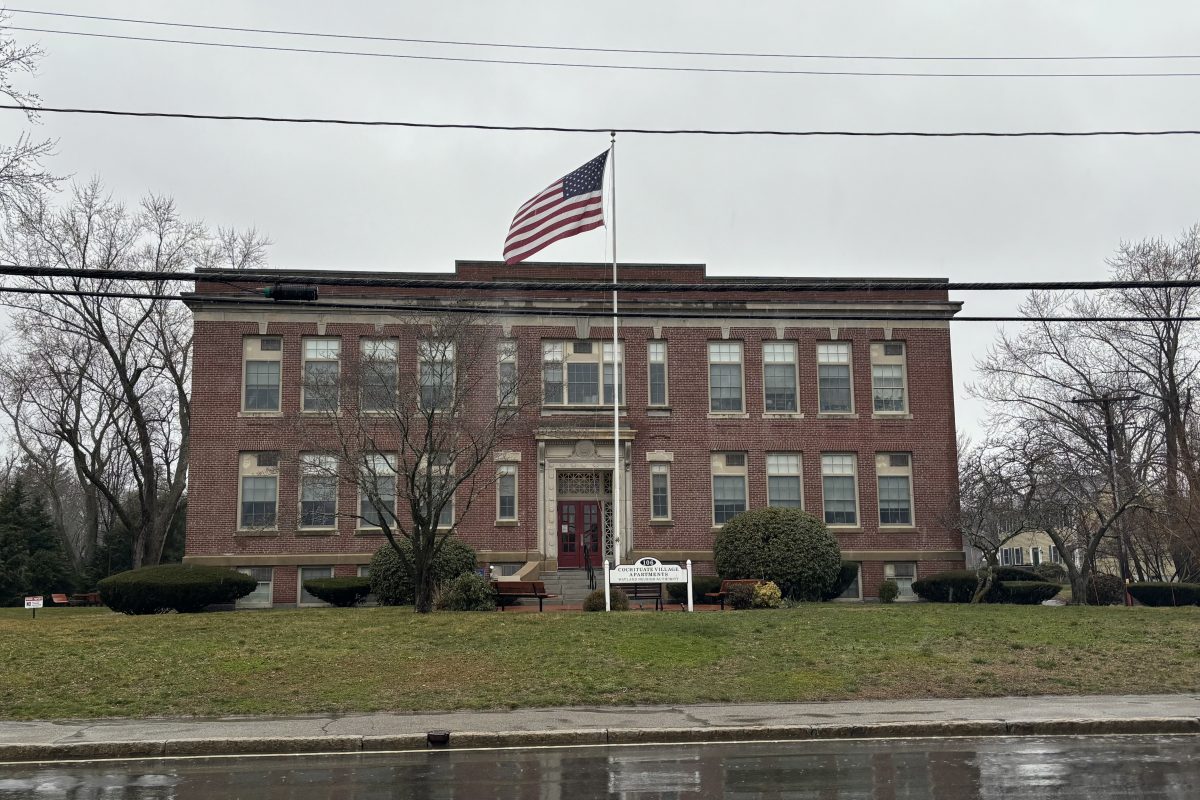When looking at per capita income, Wayland is the 14th wealthiest town in Massachusetts. However, the wealth of the majority of the community does not invalidate the push for affordable housing in Wayland.
According to both state locals and politicians, including Governor Maura Healey, the Massachusetts housing crisis is one of the biggest issues which state residents face today. Currently, there is a shortage of 170,870 houses for low income renters in Massachusetts. The inability for some people to find affordable housing in the state has caused problems within the state in general, as well as within individual towns.
“[Massachusetts is] at this complete gridlock when it comes to purchasing a home, renting units and whether or not there’s any affordable units available,” Family Promise Executive Director Rachel Hand said. “That’s the housing crisis right now, and it’s leading to homelessness. [At Family Promise], we had at least two families this week that we could not do anything for. We had to tell them to sleep in their cars and one person broke down in tears.”
While affluent towns like Wayland aren’t dealing with the same levels of homelessness as other areas, Chapter 40B of the Massachusetts Housing Laws mandates that 10% of every town’s housing needs to qualify as “affordable.” According to the Town of Concord, affordable housing is defined as housing that can be purchased by those who earn under 80% of the area’s median income.
“I think [affluent towns] have a responsibility now,” Hand said. “The crisis has become too hard for the cities to handle. A lot of these towns with white picket fences are like, ‘oh, this isn’t our problem, this is Boston’s problem.’ The reality is, those areas can’t solve this crisis alone.”
While Massachusetts has put into place several laws similar to Chapter 40B in order to improve the state housing situation, it can be difficult for Massachusetts to enforce these mandates on their own. Ultimately, like Hand said, the state will require the help of other towns and municipalities in order to solve the housing problem.
“It’s very hard for a state to enforce its will on local municipalities,” Wayland Housing Partnership member Rachel Bratt said. “The major thing that a state can do is withhold grants and withhold money. But, if the town is relatively affluent, as in the case of Wayland, it may choose to take the sanction instead of fulfilling the state mandate and doing something it prefers not to do.”
According to Executive Director of Wayland Housing Authority Brian Boggia, it is difficult for new homebuyers and young families to move to Wayland due to the high prices of housing and taxes. The average median household income for the state of Massachusetts is $96,505, while Wayland’s is $208,750. Additionally, the average median sales price for Wayland homes in February was $834,950, while the average price for Massachusetts homes was $576,000.
“The reality is [that] public housing is the most economical in the long run,” Boggia said “People don’t realize that low-income public housing is the most efficient affordable housing that’s out there. A lot of elderly people were excited about the Oxbow apartments, but [then] they found out they really couldn’t afford it. Oxbow is difficult to afford, whereas if they can qualify to come here, their rent is based on their ability to pay.”
Wayland prioritizes applicants with local preference, which means that they prioritize applicants who live or work Wayland, or who have immediate family living in Wayland. Affordable housing applicants with local preference will likely remain on the waitlist for about two or three years. Those without a local preference may remain on the waitlist for up to five to 10 years.
“There’s almost no rental houses [in Wayland],” Bratt said. “So, we’re a town that has almost exclusively single family homes and, for the most part, these homes are quite expensive. Some of them are more modest, some of them less modest, but nothing is cheap in Wayland.”
Finding sites to build affordable housing is difficult in Wayland because some citizens tend to resist affordable housing and any type of development. According to Boggia, people tend to prefer things to stay the same, whether it be an empty or a forested lot, and would rather have affordable housing be built elsewhere.
“[If someone] bought their house with an empty piece of land next door, they don’t want a development to go there,” Bratt said. “Even if it’s a market rate development, they still would prefer to have that wooded area next to their home because that’s what they’re used to. And part of that is just human nature. People don’t like change.”
This shift in attitude regarding affordable housing could be key in fighting the housing crisis. One of the major barriers to the development of affordable housing in communities is pushback from community members. If town residents put up less resistance to the development of affordable housing, towns could further expand their housing projects.
“When I first started [as Executive Director of Wayland Housing Authority], there was a lot of resistance to affordable housing,” Boggia said. “Now, I think people get that we need affordable housing and that it serves a lot of needs in the community and helps to diversify the community. We can’t have everybody at the high income level living in town, so I think it helps the culture of the community to have some affordable housing.”
Director of Youth & Family Services and WaylandCares Prevention Coalition Jason Verhoosky provides services in areas surrounding mental health and family support. While they do not have an official role on the housing board, they often work directly with the housing board and the housing authority in town to ensure that their clientele has access to safe and affordable housing. While Verhoosky believes that there can be a connection between mental health or substance abuse issues and those who apply for affordable housing, every case is unique and is addressed on a case-by-case basis.
“People have images of large, ugly, brick buildings housing poor people with multiple problems,” Bratt said. “There is certainly some truth to these old stereotypes, but newer affordable housing is typically well-designed and fits in well with the local community. Regardless, people have perceptions and they’re afraid.”
While the affluence of some of Wayland’s residents might contribute to an unwillingness to see affordable housing be built near them, it can also contribute to resources that help organizations like Verhoosky’s to provide housing.
“When we do work with families that have a lower level of income and are struggling with housing, it’s wonderful to have the resources here in town to be able to ensure that we can help provide housing,” Verhoosky said.
In Wayland, organizations that focus on increasing the amount of housing include the Wayland Housing Authority. However, according to Hand, in Massachusetts there are challenges when it comes to developing new affordable housing due to town zoning laws. These town zoning laws prevent construction, such as additional dwellings or accessible features, without approval.

While Wayland doesn’t have any general zoning bylaws that would prevent the construction of additional dwellings, there are two historic districts with construction regulations that currently do not have any affordable housing. However, former member of the Wayland Historical Commission, Planning Board and Community Conservation Gretchen Schuler believes it is possible for someone to turn their house into affordable housing by adding temporary accessibility structures such as ramps.
“[Converting historical buildings to affordable housing] is difficult because most of them are not accessible unless you put in something that is detrimental to the overall appearance,” Schuler said.
Schuler encourages anyone considering modifying their historic property into affordable housing to work with the Wayland Historical Commission to do construction in a way that doesn’t destroy the historical elements of the previous home.
“If you can [make your home accessible] in a way that doesn’t destroy the historic fabric of the home, but rather simply adjust it for the time being, I think that people should be able to do that,” Schuler said.
Wayland’s zoning restrictions create space for the community to promote new affordable housing opportunities. Right now, Boggia’s aim for the future of Wayland’s affordable housing situation starts with providing housing opportunities for people with developmental disabilities, because affordable housing for people with developmental disabilities is scarce and the necessity can be overlooked.
“We’re working on a shared housing proposal, which is in the infant stage, for young people with developmental disabilities,” Boggia said. “There’s a need for that. It’s a clear need, and there’s been a lot of support.”
One way people can help improve the housing situation is by promoting affordable housing. According to Bratt, if residents promote affordable housing, it can lead to several positive impacts to the community down the road.
“[People can] try to promote [affordable housing] and try to communicate that it can be an asset to the community,” Bratt said. “When you have more housing that is available to more people, you have a richer, more diverse community. You have more opportunities to get to know people and [for them to learn about you.]”





![Last Wednesday, the Wayland School Committee gathered to discuss a number of topics regarding the health curriculum and Innovation Career Pathway course. Another large topic of conversation was the ways to potentially mitigate distracting cell phone usage. "These [phones] are going to distract your learning and social relationships," Superintendent David Fleishman said. "That's concrete right there."](https://waylandstudentpress.com/wp-content/uploads/2025/06/Screenshot-2025-06-04-at-9.49.31 PM-1200x886.png)



























![Troy Hoyt finishes the Boston Marathon, running for the Hoyt Foundation. T. Hoyt is the son of Hoyt Foundation CEO Russ Hoyt.
“[Running a marathon] might seem like a big thing, when it’s presented to you at first, but if you break it up and just keep telling yourself, “Yes, you can,” you can start chipping away at it. And before you know it, you’ll be running the whole 26 miles, and you won’t even think twice about it.” T. Hoyt said.](https://waylandstudentpress.com/wp-content/uploads/2025/04/C36E8761-1CBB-452E-9DF2-543EF7B1095E_1_105_c.jpeg)

















































S. • Apr 11, 2024 at 5:49 AM
Loved this article. As a low-income student who lives in low-income housing but also attends Wayland (and yes, I also disagree with the image of “large, ugly, brick buildings housing poor people with multiple problems” being equated to low-income housing, severe cases are not the norm here), I’ve been frustrated that Wayland has struggled to adopt low-income housing in favor of preserving town wealth and appearances. There seems, to me, to be a feigned shock to the town knowing that diversity is a gaping struggle here, being eager to wave a hand and attribute the issue to national racial inequality across income levels, without ever openly acknowledging that inside the town there are executive decisions being made by people with power that they want to keep.
Because in truth, if it were not for METCO, I would never have seen Wayland. It would be a closed-off community that whispers its hostility in its unwillingness to change, without realizing that people like me are impacted in the margins, because we are an invisible group of people that can be neatly tucked away in immense cities like Boston. Since middle school–when I first noticed how the houses and lawns swell in size after the METCO bus emerges off the pike, and the broken glass of my neighborhood is nowhere to be seen–I have been taught that my name is not written in the American Dream. But I believe the children of this town can refuse to cling to the superficiality of such a false dream, because I have known you since I was young and have loved the people here, with their vast empathy and desire for immense change. I hope that as we take flight from this town and grow into adults, we refuse to let go of that drive, and refuse to be satisfied with an unjust world that ignores the plights of those who are far less lucky than we are.
Brandon • Apr 5, 2024 at 11:13 AM
very well written